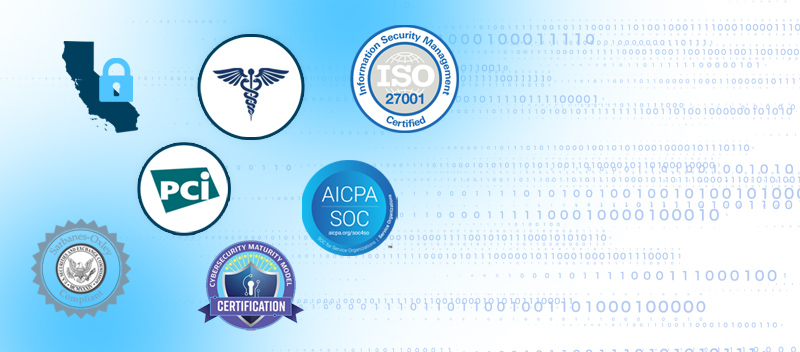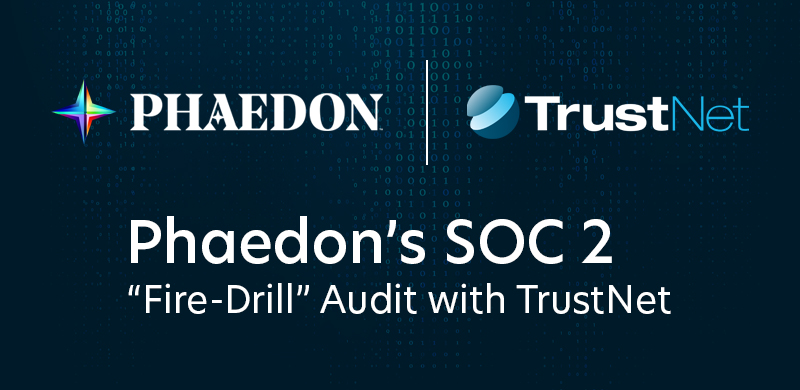Navigating the Compliance Landscape: Key Regulations and Best Practices by TrustNet

In today’s dynamic business environment, 91% of companies are planning to implement continuous compliance within the next five years. Compliance is the adherence to laws, rules, regulations, and procedures applicable to business activities. This not only protects organizations from various risks but also improves operational processes and confidence among various stakeholders.
Navigating this complex landscape requires expertise, and TrustNet stands at the forefront as a leading authority in compliance solutions. With a deep understanding of key regulations like GDPR, CCPA, HIPAA, and PCI DSS, TrustNet empowers businesses to adopt best practices that ensure security and integrity in a global marketplace.
Key Regulations and Standards
It’s crucial to understand compliance and legal requirements to protect your business and build trust. Let’s evaluate these supporting principles in detail:

General Data Protection Regulation (GDPR)
-
- Purpose: GDPR is designed to provide EU citizens with control over their personal data, obligating businesses globally to align their data processing activities with stringent privacy standards. This regulation emphasizes the significance of privacy by default and design, mandating organizations to incorporate data protection as a fundamental aspect of system development and operation.
- Key Requirements: Businesses must obtain explicit consent from individuals before processing their personal data, ensuring that consent is informed, freely given, and revocable at any time. Organizations are required to implement robust data protection measures from the onset of projects, incorporating privacy features throughout the lifecycle of processes and services.
- Benefits: Adhering to GDPR helps build trust with customers by demonstrating a commitment to protecting their personal information. This compliance can serve as a competitive advantage, distinguishing your business in markets increasingly concerned with privacy and data security.
California Consumer Privacy Act (CCPA)
-
- Purpose: The CCPA gives Californians more control over their personal data and establishes a threshold that allows privacy practices to be extended even outside of the state. This regulation compels companies to improve their advertising practices by providing consumers with an understanding of the collection, use, and sharing practices of their information.
- Key Requirements: Companies must provide clear and accessible information to consumers about data collection practices, detailing the categories of personal information collected and the purposes for which it is used. Consumers have the right to request access to their data and request its deletion, obligating businesses to establish mechanisms to process these requests efficiently.
- Benefits: Compliance with CCPA strengthens brand reputation by demonstrating a commitment to consumer privacy and responsiveness to consumer rights. It also reduces the risk of legal action and fines associated with privacy violations, providing a safeguard against reputational harm.

Health Insurance Portability and Accountability Act (HIPAA)
-
- Purpose: HIPAA is a critical regulation for the healthcare industry, aimed at protecting sensitive patient health information from unauthorized access and disclosure. It establishes a framework for ensuring the confidentiality, integrity, and availability of electronic protected health information (ePHI), thereby fostering trust between patients and healthcare providers.
- Key Requirements: Healthcare organizations must implement a comprehensive set of administrative, physical, and technical safeguards to protect ePHI. This includes conducting regular risk assessments to identify and mitigate potential threats to data security. Additionally, staff must be trained regularly on data privacy practices, ensuring that all employees understand and adhere to the organization’s security policies and procedures.
- Benefits: HIPAA compliance enhances patient trust by demonstrating a commitment to protecting their sensitive health information. It also shields healthcare organizations from substantial fines and reputational damage resulting from data breaches, providing a legal and financial safeguard.

Payment Card Industry Data Security Standard (PCI DSS)
-
- Purpose: PCI DSS is essential for businesses handling credit card transactions, ensuring the security and confidentiality of cardholder data. This standard is designed to prevent data breaches and fraud by establishing a comprehensive framework for securing payment card data.
- Key Requirements: Organizations must maintain a secure network infrastructure, implementing firewalls and encryption protocols to protect cardholder data during transmission and storage. Access to sensitive information must be restricted to authorized personnel, with robust authentication measures in place to prevent unauthorized access.
- Benefits: PCI DSS compliance significantly reduces the risk of data breaches, safeguarding businesses from financial losses and reputational damage. It also enhances customer confidence in payment processes, providing assurance that their sensitive information is protected.

System and Organizations Controls (SOC)
-
- Purpose: SOC reports are crucial for service providers, offering transparency into their data protection and management practices. These reports provide assurance to clients about the security, availability, processing integrity, confidentiality, and privacy of the systems used to process client data.
- Key Requirements: Service providers must establish a comprehensive control framework that addresses all aspects of data processing and security. This includes implementing internal controls to safeguard data and undergoing regular independent audits to validate the effectiveness of these controls.
- Benefits: SOC compliance enhances client trust by demonstrating a commitment to data protection and transparency. It can serve as a differentiator in a competitive market, positioning service providers as reliable partners for businesses seeking to outsource critical functions.
Sarbanes-Oxley Act (SOX)
-
- Purpose: SOX is designed to protect investors by ensuring the accuracy and reliability of financial reporting in publicly traded companies. This regulation enhances corporate governance and accountability, preventing fraudulent financial practices and restoring investor confidence in the financial markets.
- Key Requirements: Public companies must establish robust internal controls over financial reporting, ensuring the accuracy and completeness of financial statements. The CEO and CFO are required to certify the accuracy of these statements, making them personally accountable for any discrepancies.
- Benefits: SOX compliance builds investor confidence by demonstrating a commitment to financial transparency and accountability. It also protects companies from legal and financial repercussions associated with fraudulent financial reporting, providing a safeguard against reputational harm.
Cybersecurity Maturity Model Certification (CMMC)
-
- Purpose: The CMMC establishes cybersecurity standards for defense contractors, ensuring the protection of sensitive national security information. This certification is a requirement for companies working with the Department of Defense (DoD), providing assurance that they have implemented the necessary cybersecurity practices to protect controlled unclassified information.
- Key Requirements: Companies must implement cybersecurity practices based on the CMMC maturity level appropriate for their contract, ranging from basic cyber hygiene to advanced security practices. This involves conducting regular assessments to identify and mitigate cybersecurity risks, ensuring that systems and networks are protected from potential threats.
- Benefits: CMMC compliance is essential for securing defense contracts and protecting sensitive information, providing a competitive advantage in the defense industry. It also enhances organizational resilience by ensuring that cybersecurity practices are integrated into all aspects of operations.
ISO 27001
-
- Purpose: ISO 27001 provides a globally recognized framework for establishing, implementing, maintaining, and continually improving an Information Security Management System (ISMS).
- Key Requirements: Organizations must develop an ISMS that encompasses policies, procedures, and other controls tailored to their specific business objectives and risk environment. This involves conducting thorough risk assessments to identify potential vulnerabilities and implementing controls to mitigate these risks.
- Benefits: ISO 27001 certification provides a competitive edge by demonstrating to clients and partners that your organization takes information security seriously. It fosters trust by ensuring that sensitive information is handled with the highest standards of confidentiality, integrity, and availability.
By fully understanding and implementing these regulations, your organization not only meets legal requirements but also builds a robust foundation of trust and security.
For more information on our comprehensive compliance services, Schedule a Call today.
Best Practices for Compliance
Navigating the complexities of compliance requires not only understanding regulations but also implementing effective practices to ensure adherence and protect your organization. Here’s a comprehensive look at best practices to guide you:
— Risk Assessment
-
- Identifying and Assessing Potential Compliance Risks: Begin by conducting thorough risk assessments to identify areas where your organization may be vulnerable to non-compliance. This involves reviewing current processes, systems, and controls to pinpoint weaknesses or gaps that could lead to violations.
- Developing a Risk Management Plan: Once risks are identified, develop a robust risk management plan that outlines strategies to mitigate these risks. This plan should include specific actions, timelines, and responsible parties, ensuring a proactive approach to managing compliance risks.
— Policy and Procedure Development
-
- Creating Clear and Comprehensive Policies and Procedures: Develop detailed policies and procedures that align with regulatory requirements and industry standards. These documents should be easily accessible and written in clear, concise language to ensure all employees understand their roles and responsibilities.
- Ensuring Compliance with Regulations and Industry Standards: Regularly review and update policies and procedures to reflect changes in regulations and industry best practices. This ensures your organization remains compliant and can quickly adapt to new requirements.
— Employee Training and Awareness
-
- Providing Regular Training to Employees on Compliance Requirements: Implement a comprehensive training program that educates employees on compliance obligations and best practices. This training should be ongoing and tailored to the specific roles and responsibilities of your staff.
- Promoting a Culture of Compliance: Encourage a company-wide culture that values compliance and ethical behavior. This involves leadership setting the tone at the top and recognizing employees who demonstrate a strong commitment to compliance.
— Monitoring and Auditing
-
- Implementing Effective Monitoring and Auditing Processes: Establish regular monitoring and auditing procedures to evaluate compliance with internal policies and external regulations. This includes setting up key performance indicators and compliance dashboards to track progress and identify deviations.
- Identifying and Addressing Compliance Gaps: Use the insights from audits to identify any compliance gaps or deficiencies. Develop action plans to address these issues promptly and prevent future occurrences, enhancing your organization’s compliance posture.
— Incident Response
-
- Developing a Plan for Responding to Compliance Incidents: Create a detailed incident response plan that outlines the steps to take when a compliance breach occurs. This plan should include communication protocols, investigation procedures, and corrective actions.
- Ensuring Timely and Effective Remediation: Ensure that any compliance incidents are addressed swiftly and effectively. This involves not only resolving the issue but also analyzing the root cause to prevent recurrence, thereby strengthening your organization’s resilience.
By integrating these best practices into your compliance strategy, you can effectively manage compliance risks and build a robust framework for safeguarding your business.
TrustNet’s Compliance Solutions
At TrustNet, we know how difficult it may be to achieve and uphold compliance. Our all-inclusive solutions are made to support you in effectively and confidently overcoming these challenges.
1. Compliance Assessments
- Assessing an Organization’s Compliance Posture: Our expert team conducts thorough assessments to evaluate your current compliance landscape. We review your processes, policies, and controls to determine your organization’s strengths and weaknesses so that there is no doubt about your ability to comply.
- Identifying Areas for Improvement: After the assessment, we provide detailed reports highlighting areas for improvement. Such insights are essential in creating relevant strategies that enhance compliance posture and reduce risks, thereby ensuring the organization’s success.
2. Compliance Consulting
- Providing Expert Guidance on Compliance Strategies and Best Practices: Our team is well-versed in the latest regulatory requirements and industry standards. We offer tailored advice to help you develop and implement effective compliance strategies that align with your business goals and regulatory obligations.
3. Compliance Software
- Offering Innovative Software Solutions to Automate Compliance Tasks: Your compliance procedures are streamlined and automated by TrustNet’s state-of-the-art compliance software. Our solutions ease the administrative load, freeing you to concentrate on your core business operations while maintaining compliance.
4. Compliance Training
- Delivering Comprehensive Training Programs on Compliance Topics: We design and deliver training programs that equip your team with the knowledge and skills needed to meet compliance requirements.
By leveraging TrustNet’s comprehensive compliance solutions, you can transform compliance from a challenge into a strategic advantage.
The Path to Compliance Excellence
Staying informed and proactive is essential for your organization’s success. From understanding key regulations to implementing best practices, each step fortifies your compliance framework. These efforts not only protect your business but also build trust with clients and partners, setting the stage for long-term growth.
At TrustNet, we are deeply committed to helping organizations like yours achieve compliance excellence. Our comprehensive solutions, expert consulting, innovative software, and engaging training programs are tailored to meet your unique needs in a dynamic regulatory environment.
Start your journey towards compliance excellence with TrustNet. Schedule a Consultation today to explore how we can support your compliance needs.








